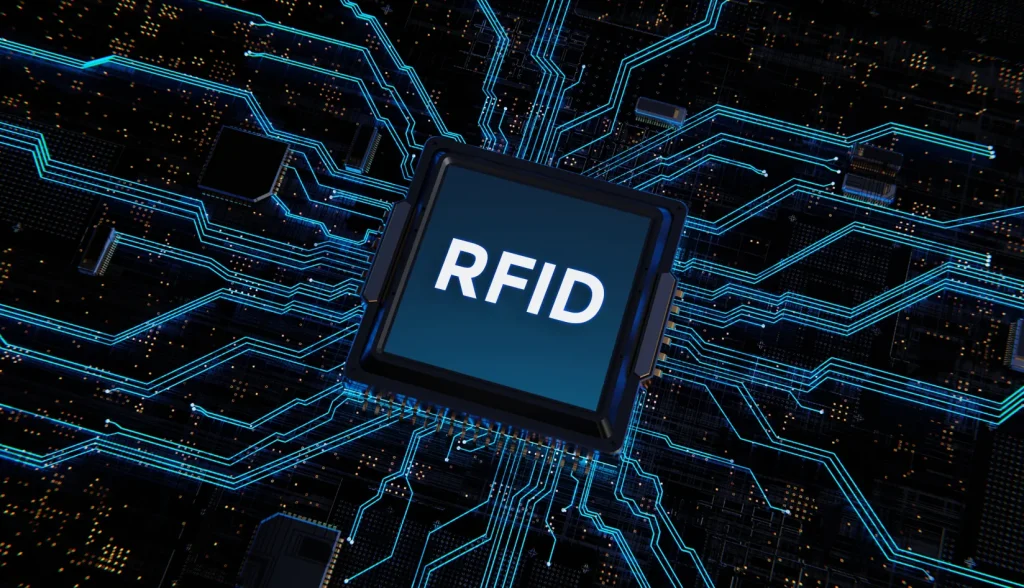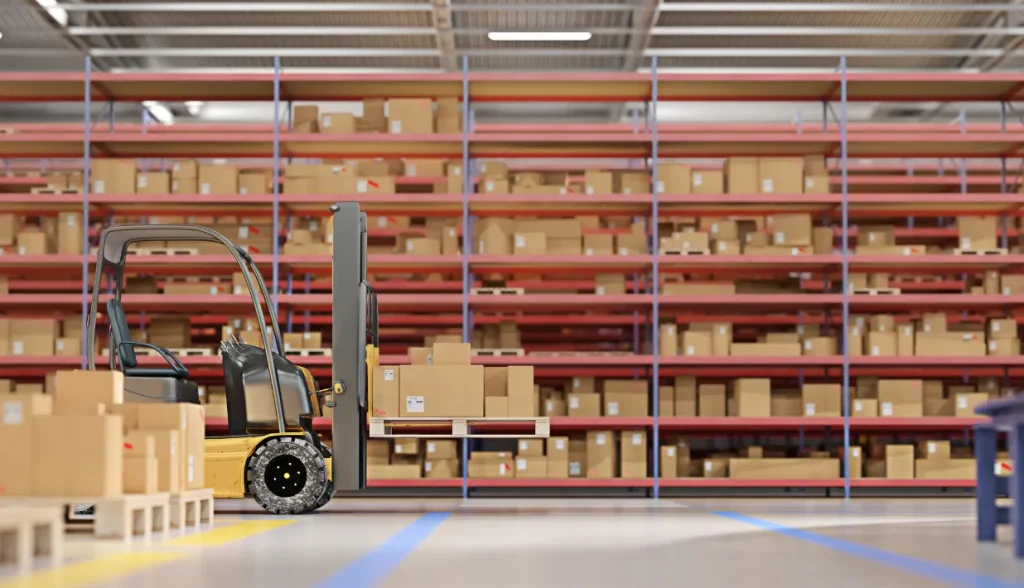
In today’s rapidly evolving tech world, Radio-Frequency Identification (RFID) is revolutionizing industries. You’ve likely encountered terms like UHF RFID and RAIN RFID, sometimes used as if they’re the same thing. But are they really? What makes them distinct, and why should your business care?
If you’re curious about how these powerful technologies operate, how they can boost your business efficiency, and how they relate to each other, you’re in the perfect place. This article will demystify Ultra-high frequency RFID and RAIN RFID, explore their connection, and uncover their practical applications. Get ready to dive into the exciting world of RFID and discover how it can transform your operations!
Understanding UHF RFID
Before we delve into RAIN RFID, let’s first get a solid grasp of Ultra-High Frequency RFID. UHF RFID operates within the 860 MHz to 960 MHz frequency range. This allows for rapid data exchange and identification over considerable distances. Think of UHF RFID as an umbrella term encompassing various protocols and technologies within this specific frequency band.
The key advantage of UHF RFID? Streamlined asset tracking and efficient inventory management, all without needing to visually scan each item. Imagine quickly taking stock of your entire warehouse without line-of-sight limitations – that’s the power of UHF RFID.

Delving into RAIN RFID
Now, let’s talk RAIN RFID. RAIN, which stands for “Radio-Frequency Identification,” is more than just a technology – it’s an alliance dedicated to promoting the widespread use and standardization of passive Ultra-high frequency RFID. Think of it as a specific *type* of UHF RFID, focused on global compatibility and ease of use.
RAIN RFID is a battery-free, wireless marvel that connects everyday objects – from clothing and fresh produce to shipping pallets – to the internet. This connectivity empowers businesses and consumers to effortlessly identify, track, and interact with these items. Imagine real-time insights and historical data at your fingertips. With RAIN RFID, you can pinpoint an item’s identity, monitor its journey, and locate it within a facility, and much more. It’s about bringing items to the Internet of Things (IoT).

RAIN RFID and UHF RFID: Understanding the Relationship
So, how do RAIN RFID and UHF RFID relate? Think of RAIN RFID as a specialized member within the broader UHF RFID family. Essentially, RAIN RFID is a subset of Ultra-high frequency RFID that embraces a standardized, cloud-connected approach.
While all RAIN RFID tags utilize UHF RFID technology, not every UHF RFID system adheres to RAIN RFID protocols. RAIN RFID is specifically designed for large-scale, globally standardized applications, whereas traditional UHF RFID can be tailored for very specific or niche applications. Although both operate within the same frequency range, RAIN RFID is optimized for scalability, seamless IoT integration, and cloud-based asset tracking. It’s about creating a unified, interoperable ecosystem.
Key Differences: UHF RFID vs. RAIN RFID
Let’s break down the core differences between UHF RFID and RAIN RFID to give you a clearer picture.
Definition:
UHF RFID is the general term for RFID systems operating in the Ultra-High Frequency band. RAIN RFID, on the other hand, is a specific brand and trademark focused on promoting the global adoption and standardization of passive UHF RFID technology. It’s a stamp of approval for interoperability and cloud readiness.
Technical Specifications:
| Feature | UHF RFID | RAIN RFID |
| Frequency | 860-960 MHz | 860-960 MHz |
| Standard | Various proprietary & open standards | EPC Gen2 (ISO/IEC 18000-63) |
| Power Source | Passive, active, or semi-passive | Passive only (no battery required) |
| Cloud Integration | Optional | Core feature |
| Application | Supply chain management, access control, inventory management, healthcare management | Retail, Healthcare equipment tracking, transportation |
Functional Advantages of RAIN RFID
RAIN RFID, being a subset of UHF RFID, specifically refers to passive UHF systems that adhere to GS1 EPC Gen2/ISO 18000-63 standards. Earning the certification from the RAIN Alliance signifies guaranteed interoperability and smooth cloud integration.
Unlike generic UHF RFID, which may lack standardized certification and built-in cloud capabilities, RAIN ensures seamless data transmission to IoT platforms. It achieves this through standardized protocols like the RAIN Reader Communication Interface. While both UHF and RAIN offer rapid read rates, RAIN provides the crucial advantage of global consistency, making it ideal for widespread applications in supply chain management, retail, and the broader Internet of Things landscape.
In Conclusion: Choosing the Right RFID for Your Needs
To put it simply, Ultra-high frequency RFID and RAIN RFID share the same fundamental technology. However, RAIN RFID emerges as a standardized, cloud-centric subset specifically engineered for global interoperability and seamless IoT integration.
While ultra-high frequency RFID provides flexibility for specialized, niche applications, RAIN’s unified standards and certified ecosystem position it as the prime choice for industries prioritizing scalability and regulatory compliance, such as retail and healthcare. Looking ahead, with the convergence of technologies like AI, blockchain, and 6G, RAIN’s battery-free, cost-effective design is poised to drive sustainable, connected supply chains. Ultimately, RAIN RFID isn’t just an incremental improvement over UHF – it’s setting a new benchmark for a future powered by data and transparency in the supply chain and beyond. Consider implementing RAIN RFID solutions to enhance your business operations.
Frequently Asked Questions (FAQ)
Passive UHF RFID vs. RAIN: What’s the Real Difference?
Passive UHF RFID is the broader technology utilizing ultra-high frequencies (860-960 MHz) for wireless identification. RAIN RFID, conversely, is a specific designation for Passive UHF RFID products that have earned certification from the RAIN Alliance. This certification assures interoperability and adherence to ISO/IEC 18000-63 and GS1 EPC Gen2 standards. Think of RAIN as a brand, similar to Wi-Fi, signifying cloud connectivity and consistent, reliable performance within the RFID tracking system ecosystem.
What is the RAIN Reader Communication Interface (RCI)?
The RAIN Reader Communication Interface (RCI) is a standardized protocol employing JSON commands to manage RFID readers. This standardization ensures interoperability across different reader brands, eliminating the need for proprietary, vendor-specific APIs. RCI streamlines operations by grouping multiple commands into profiles and supports global standards like GS1 and ISO for simplified integration. Being open-source and machine-readable, RCI also allows for vendor-specific extensions, providing both standardization and flexibility in RFID implementation.
The Origins of RAIN RFID
The term “RAIN RFID” emerged in 2014 through a collaborative effort by leading tech companies including Google, Intel, and Impinj. They coined “RAIN” to create a unified brand identity for passive UHF RFID technology. The aim was to clarify market confusion caused by the generic use of “RFID” and to highlight its immense potential within the Internet of Things. To foster global adoption, they established the RAIN Alliance, standardizing the technology under the GS1 EPC Gen2 and ISO/IEC 18000-63 protocols, paving the way for seamless integration of RFID data with cloud platforms and supply chian visibility solutions.
NFC vs. RAIN RFID: Are They Interchangeable?
Absolutely not. NFC (Near Field Communication) and RAIN RFID are fundamentally different technologies. RAIN RFID operates in the UHF frequency band (860–960 MHz) and complies with ISO/IEC 18000-6 standards, making it ideal for long-range applications (up to 15 meters) such as logistics and inventory management. In contrast, NFC operates at 13.56 MHz (HF) using the ISO/IEC 14443/18092 standards and is designed for short-range interactions—think contactless payments and device pairing within a few centimeters. While both are passive RFID technologies, their frequencies, protocols, and applications are distinctly different. For NFC payment solutions and short-range communication, NFC is the technology of choice, whereas for long-range tracking and inventory, RAIN RFID excels.

RFID Antenna UHF
15-Meter Cable for UHF RFID Fixed Reader
UHF Tag
4″x2″ 860-960MHz UHF RFID Label RFID M4D
UHF Tag
4″x4″UHF RFID Label Alien H3 | ISO18000-6C
RFID Antenna UHF
5-Meter Cable for UHF RFID Fixed Reader
HF Card
ABS RFID KEY-FOB Tag RFID Classic 1K
HF Card
ABS RFID KEY-FOB Tag RFID Classic 4K
HF Card
ABS RFID KEY-FOB Tag RFID Ultralight C
HF Tag
ABS RFID KEY-FOB Tag RFID Ultralight EV1
LF Card
ABS RFID KEY-FOB Tag ATA5577
LF Card
ABS RFID KEY-FOB Tag EM4200
HF Card
ABS RFID KEY-FOB Tag EM4305
HF Card
ABS RFID KEY-FOB Tag RFID TAG 213